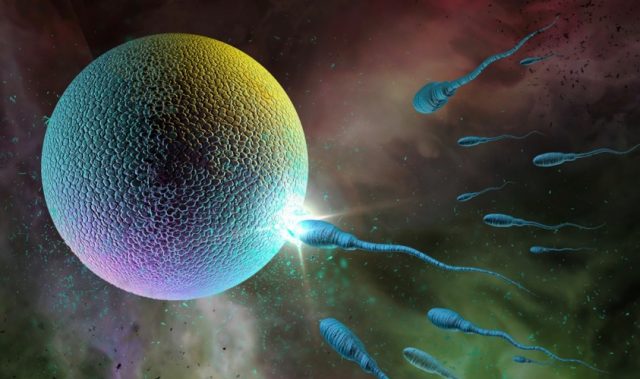
AsianScientist (May 3, 2016) – An international team of researchers has identified gene variants that increase a woman’s chance of giving birth to non-identical twins by 29 percent. Their work was published in the American Journal of Human Genetics.
One of the authors, Associate Professor Dale Nyholt from the Queensland University of Technology’s Institute of Health and Biomedical Innovation (IHBI), said the identification of the two DNA variants associated with a higher chance of non-identical twins also sheds light on the mechanisms of female fertility.
“Dizygotic [non-identical] twins develop from two separate eggs that have emerged from separate ovarian follicles at the same time and been fertilized by separate sperm cells,” said Nyholt, who heads the Statistical and Genomic Epidemiology Laboratory in IHBI.
“Two thirds of twins are non-identical pairs and they are as genetically alike as their other siblings. Identical twins, in contrast, share the same genetic makeup because they are the result of one embryo splitting in half.”
Nyholt said the research team’s findings help to advance our understanding of women’s fertility—and infertility—by identifying key mechanisms controlling function of the ovaries.
“We found one variant is close to the gene coding for the secretion of the hormone that stimulates ovarian follicles to release an egg. The second variant is in a location likely to be involved in the ovaries’ response to the follicle-stimulating hormone,” he said.
“When both variants are present, a woman has a 29 percent greater chance of having non-identical twins.”
Nyholt said one of the gene variants also had significant effects on other fertility measures, including the age of a girl’s first period, age at menopause, number of children, and the age at first and last child.
“It also affects the genes behind polycystic ovary syndrome, which is a major cause of female infertility,” he said. “This discovery will help research on the response to hormone stimulation for assisted reproduction such as in-vitro fertilization.”
While there are more genes to be found that influence non-identical twin birth, Nyholt said that in future, a simple gene test could be developed to identify women at risk of a strong response to hormonal treatment that could prevent the serious complication of ovarian hyper-stimulation syndrome.
The article can be found at: Mbarek et al. (2016) Identification of Common Genetic Variants Influencing Spontaneous Dizygotic Twinning and Female Fertility.
———
Source: Queensland University of Technology; Photo: Shutterstock.
Disclaimer: This article does not necessarily reflect the views of AsianScientist or its staff.












